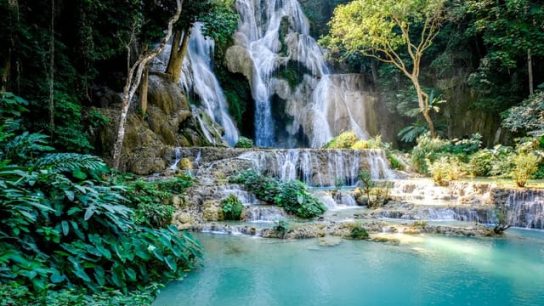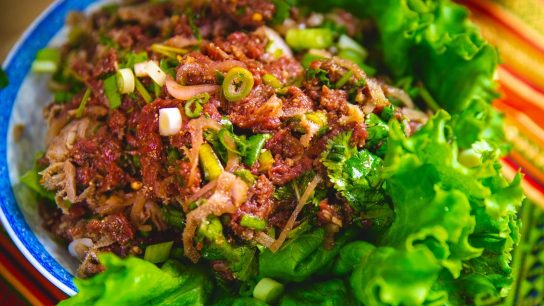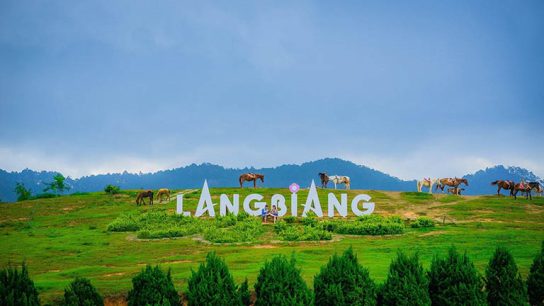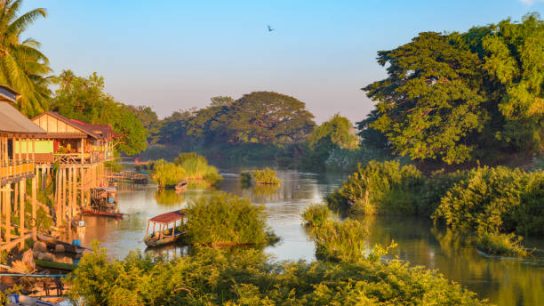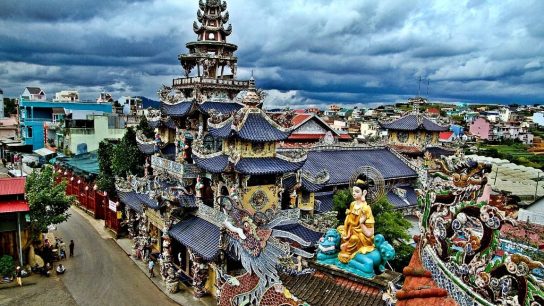Rainy season in Vietnam is perhaps one of the most anticipated times of the year for many travelers who want to experience this country’s diversity and charm. However, it is also one of the most challenging times of the year for those who want to avoid getting wet, cold, or sick. So how can you make sure that your trip during this period is enjoyable and memorable?. The rainy season typically occurs from May to October, with the peak of rainfall in July and August. During this period, heavy rains, flooding, and typhoons are common in certain regions. This article is a guide to help you avoid getting wet and navigate potential flooding during Vietnam’s rainy season.

What are the typical features of the rainy season in Vietnam by region?
It’s important to note that these timelines and features are generalizations, and variations can occur from year to year. Weather patterns, including the onset and duration of the rainy season, can be influenced by factors such as climate change and natural variability. Travelers are advised to check local weather forecasts and be flexible with their plans, especially during the rainy season.
Vietnam’s rainy season varies by region due to the country’s diverse topography and climate. Here are the typical features of the rainy season in different regions of Vietnam:
Northern Vietnam (Hanoi, Halong Bay):

The rainy season in the north usually occurs from June to September. This period is characterized by an orchestra of rain, with daily downpours drenching the landscape in July and August. The atmosphere becomes thick with humidity, amplifying the warmth of the region.
The northern region is no stranger to the whims of typhoons and tropical storms, especially in the late summer months. August and September bring not only heavy rainfall but also the potential for flooding and strong winds. These weather phenomena can disrupt travel plans, causing delays and cancellations, and impacting outdoor activities.
For those venturing into the mountainous terrain of Sapa, Ha Giang, and Ninh Binh, the landscape’s beauty is juxtaposed with the risk of landslides during intense rainfall. Exploring these hilly regions demands caution as paths become slippery and unstable. Low-lying areas and urban centers are not exempt from the rainy season’s effects; flooding becomes a concern, particularly in locations lacking proper drainage systems.
Central Vietnam (Hue, Da Nang, Hoi An):
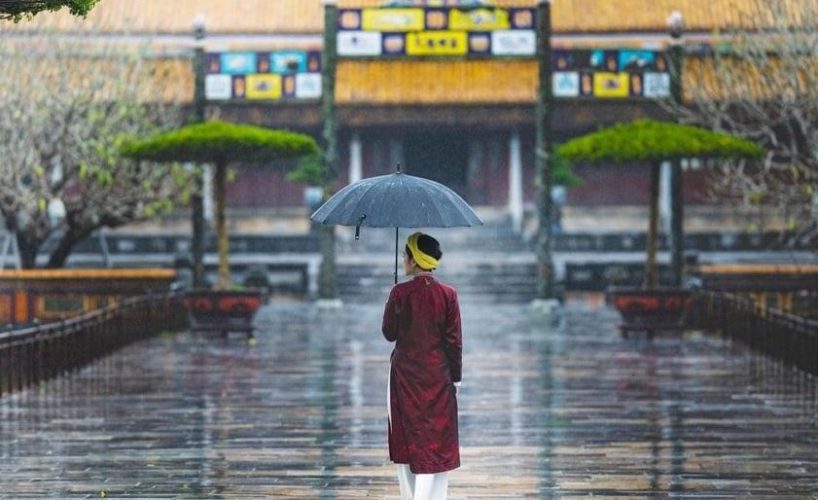
From September to December, the central part of the country experiences its annual deluge, with peak rainfall gracing the landscape in October and November. During this period, you can expect heavy rainstorms, strong winds, and high humidity. The average temperature ranges from 25°C to 30°C, but it can feel hotter or colder depending on the wind direction.
The best time to visit Central Vietnam during the rainy season is from November to April, when the weather is dry and sunny. This is also the peak tourist season, so you can enjoy more activities and attractions without too much crowds or queues.
Southern Vietnam (Ho Chi Minh City, Mekong Delta)

The rainy season in South Vietnam usually lasts from May to October, with the peak from June to September.
Rainfall is more evenly distributed throughout the season. While it may not experience the same intensity of typhoons as the north and central regions, the south can still face flooding, especially in urban areas with poor drainage systems.
The best time to visit South Vietnam during the rainy season is from November to April, when the weather is dry and mild. This is also a good time to experience some of the local festivals and events that take place during this period.
Why Visit Vietnam During the Rainy Season?
You might think that visiting Vietnam during the rainy season is a bad idea because it means that you will have to deal with heavy rainstorms, strong winds, high humidity, low visibility, flooded roads, canceled flights, or even typhoons. However, this is not necessarily true. In fact, there are many reasons why visiting Vietnam during this period can be a great opportunity for you:
- Savings on accommodation due to discounts and special deals during off-peak seasons.
- Opportunity to explore normally closed or crowded attractions during dry seasons.
- Enjoyment of unique activities available only when it rains.
- Witnessing spectacular scenes of raindrops falling and creating rainbow arches.
- Admiring lush green landscapes refreshed by rain after drought periods.
How to Plan Your Trip According to The Weather?
Now that you know how the rainy season varies by region in Vietnam, you might be wondering how to plan your trip accordingly. Here are some tips to prepare your trip based on the weather conditions:
Thing to do
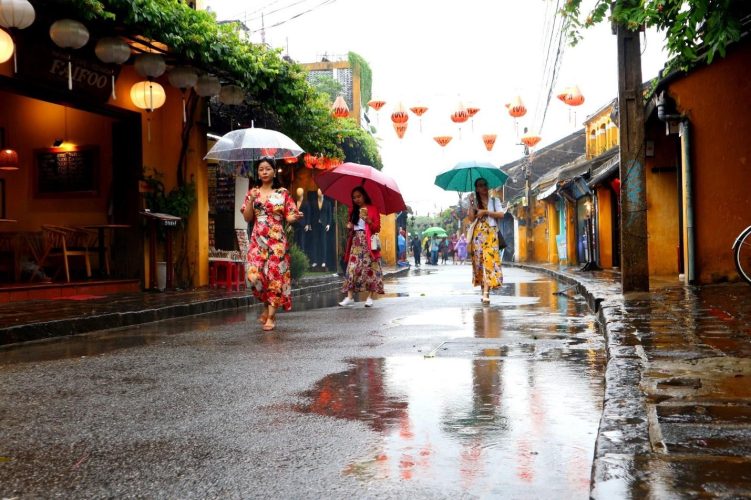
In Vietnam during the rainy season, there are still plenty of activities and experiences to enjoy despite the occasional downpours. Here are some suggestions for things to do:
- Explore Indoor Attractions: Visit museums, art galleries, and historical sites that provide shelter from the rain. In Hanoi, you can explore the Vietnam Museum of Ethnology or the Temple of Literature.
- Shopping: Explore local markets or shopping centers. You can shop for traditional crafts, clothing, and souvenirs while staying dry
- City Tours: Join a city tour by bus or cyclo (cycle rickshaw) that allows you to see the sights while staying dry. Many cities offer guided tours even in inclement weather.
- Attend Cultural Performances: Check out traditional music and dance performances. The water puppet shows in Hanoi, for example, provide a unique and entertaining cultural experience.
- Boat Tours: While heavy rain may affect boat tours in some areas, a gentle drizzle can add a serene touch to a cruise in places like Ha Long Bay or the Mekong Delta.
- Nature Walks in Light Rain: If the rain is not too heavy, consider a nature walk. Many landscapes, such as rice terraces in Sapa, are incredibly scenic during or after rain.
Packing for Vietnam during the rainy season requires thoughtful consideration to ensure you’re prepared for unexpected downpours and potential disruptions. Here’s a suggested packing list:
What to bring along?
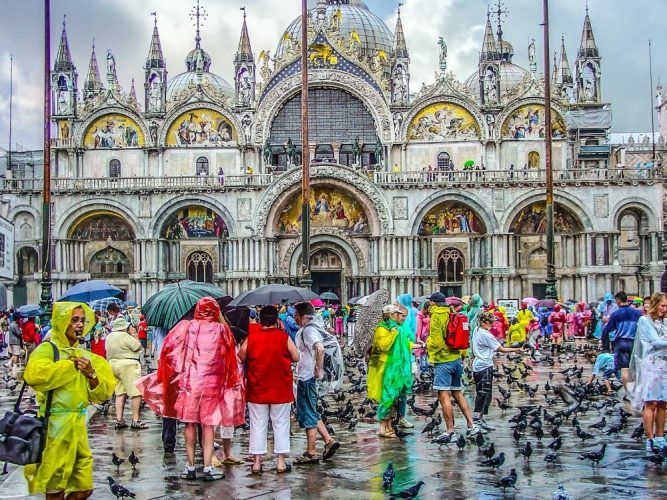
- Rain Jacket or Poncho: A lightweight, breathable rain jacket or poncho is essential for staying dry during sudden rain showers.
- Waterproof Shoes or Sandals: Comfortable footwear with good traction that can withstand wet conditions, especially if you plan on walking through puddles or wet terrain.
- Umbrella: A compact, travel-friendly umbrella can be handy for light rain and provides extra protection when exploring urban areas.
- Mosquito Repellent: With increased humidity and rainfall, there may be more mosquitoes. Pack mosquito repellent to protect yourself from bites.
- First Aid Kit: Pack a basic first aid kit with essentials such as adhesive bandages, pain relievers, antiseptic wipes, and any necessary prescription medications.
Rainy season in Vietnam is one of the most rewarding times of the year for travelers who want to save money, access amazing attractions, appreciate natural beauty, experience unique activities, make new friends, have fun, learn new things, discover new places, create unforgettable memories.
So what are you waiting for? Book your trip today and enjoy the rainy season in Vietnam!
Fishing in Vietnam: A Guide to the Best Fishing Spots for Different Types of Fish
Famous Streets in Ho Chi Minh City: A Travel Guide

